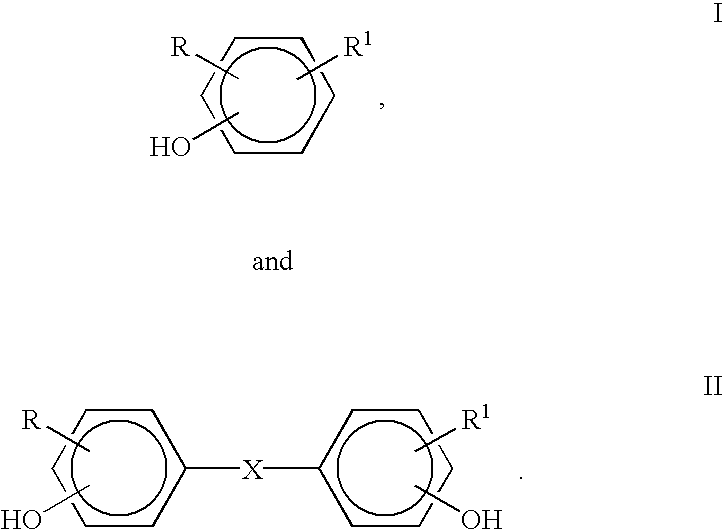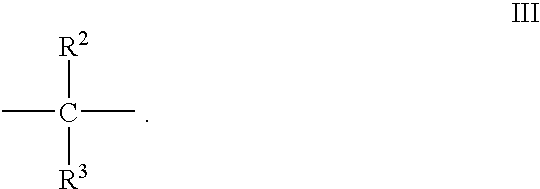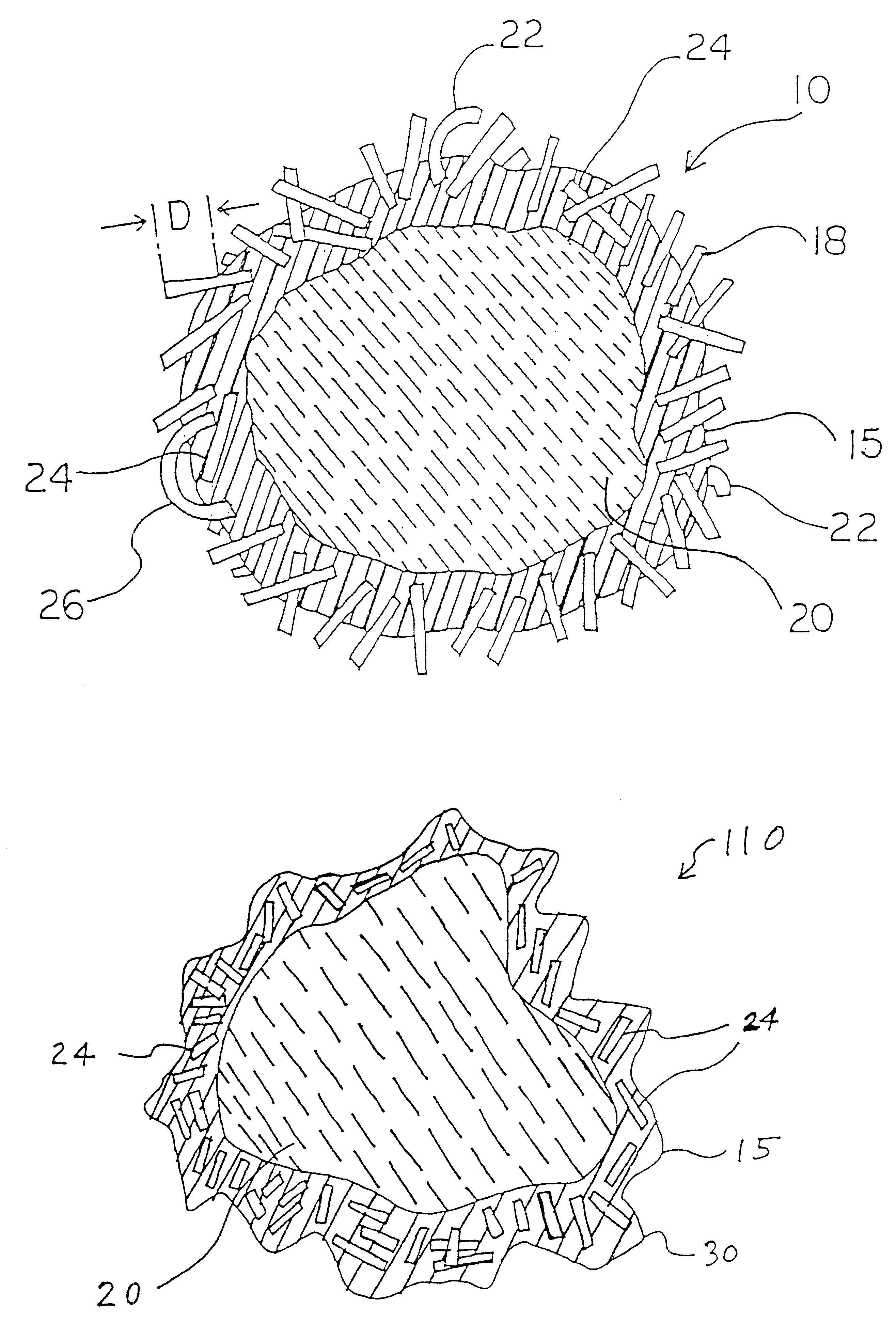Proppants with fiber reinforced resin coatings
- Summary
- Abstract
- Description
- Claims
- Application Information
AI Technical Summary
Benefits of technology
Problems solved by technology
Method used
Image
Examples
example 2
Preparation of Precured Resin / Fiber Coated Proppant
In a 3 quart mixing bowl, 1 kilogram of 20 / 40 mesh sand and an appropriate amount of fiber to achieve the weight percents of fiber listed in the following Tables were added. The sand was stirred with a Hobart C-100 mixer and heated to 360.degree. F. 41.8 grams of EX9100 resole resin (Borden, Inc., North American Resins) was added and mixed for 30 seconds. 0.4 grams of A-1100 silane (Union Carbide Corporation) was added. Mixing was continued and at 50 seconds of mixing time the stirrer was shifted to high speed. At 100 seconds, 0.3 grams of betaine nonionic surfactant, cocamidopropyl hydroxysultaine, was added. At 150 seconds the mixer was shifted to initial low speed. At 360 seconds mixing time the coated sand was discharged from the bowl as a free flowing product. The product was post baked for 14 minutes in an oven at 360.degree. F. Then the coated fiber-laden sand was cooled and sieved through an 18 mesh screen to eliminate agglo...
example 3
Precured proppants with fibers according to the description of Example 2 were prepared. Table 12 lists the precured samples of this example. The ingredients of the same size and material are the same as in Example 2 unless otherwise indicated. Varying amounts of different kinds of fiber were prepared to get products with roughened surfaces and / or protruding fibers. Observation of these samples under the microscope indicate that for milled glass fiber, the fibers start to protrude at the fiber level of 13 to 15%. Considerable amounts of loose fibers were observed in the carbon filled samples at fiber levels of 14% and above. Protruding fibers were not observed for milled ceramic fiber filled samples because of the very small ceramic fiber size. However, the 14% milled ceramic fiber sample appeared to have a very rough surface.
example 4
A series of samples of fiber-laden curable and precured proppants was tested for 20 / 40 resin coated sand, at 250.degree. F. (121.degree. C.), for a flow rate of 2 lb.sub.m per ft.sup.2, between Ohio Sandstone with 2% KCl. The samples employed resin and fibers coated on 20 / 40 Brady sand. Sample 106 (Table 13) was curable proppant which employed EX-5150 resin, 1 / 4% by weight of substrate 1 / 32 inch long milled glass fibers (as in Table 2), and had a loss on ignition (LOI) of 2.91%. Sample 107 (Table 14) was a curable proppant which employed EX-5150 resin, 2% by weight of substrate 25 microns long ceramic fibers, and had a LOI of 2.97%. Sample 108 (Table 15) was a precured proppant which employed OFR-9100 resin manufactured by Borden, Inc. / North American Resins, Louisville, Ky., 2% by weight of substrate 1 / 32 inch long milled glass fibers, and had a LOI of 2.42%. Control Sample 18 (Table 16) employed ACFRAC PR 4000 precured proppant, manufactured by Borden, Inc., North American Resins, ...
PUM
| Property | Measurement | Unit |
|---|---|---|
| Length | aaaaa | aaaaa |
| Length | aaaaa | aaaaa |
| Fraction | aaaaa | aaaaa |
Abstract
Description
Claims
Application Information
 Login to View More
Login to View More - R&D
- Intellectual Property
- Life Sciences
- Materials
- Tech Scout
- Unparalleled Data Quality
- Higher Quality Content
- 60% Fewer Hallucinations
Browse by: Latest US Patents, China's latest patents, Technical Efficacy Thesaurus, Application Domain, Technology Topic, Popular Technical Reports.
© 2025 PatSnap. All rights reserved.Legal|Privacy policy|Modern Slavery Act Transparency Statement|Sitemap|About US| Contact US: help@patsnap.com



